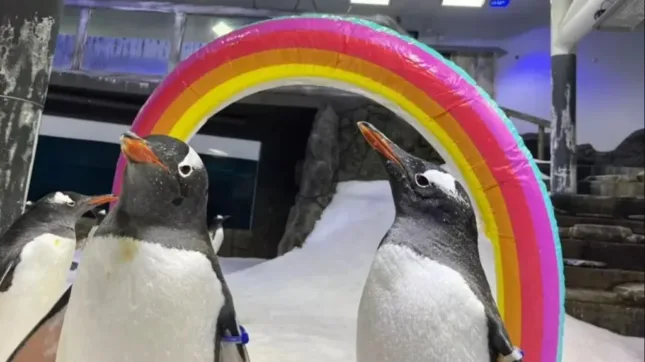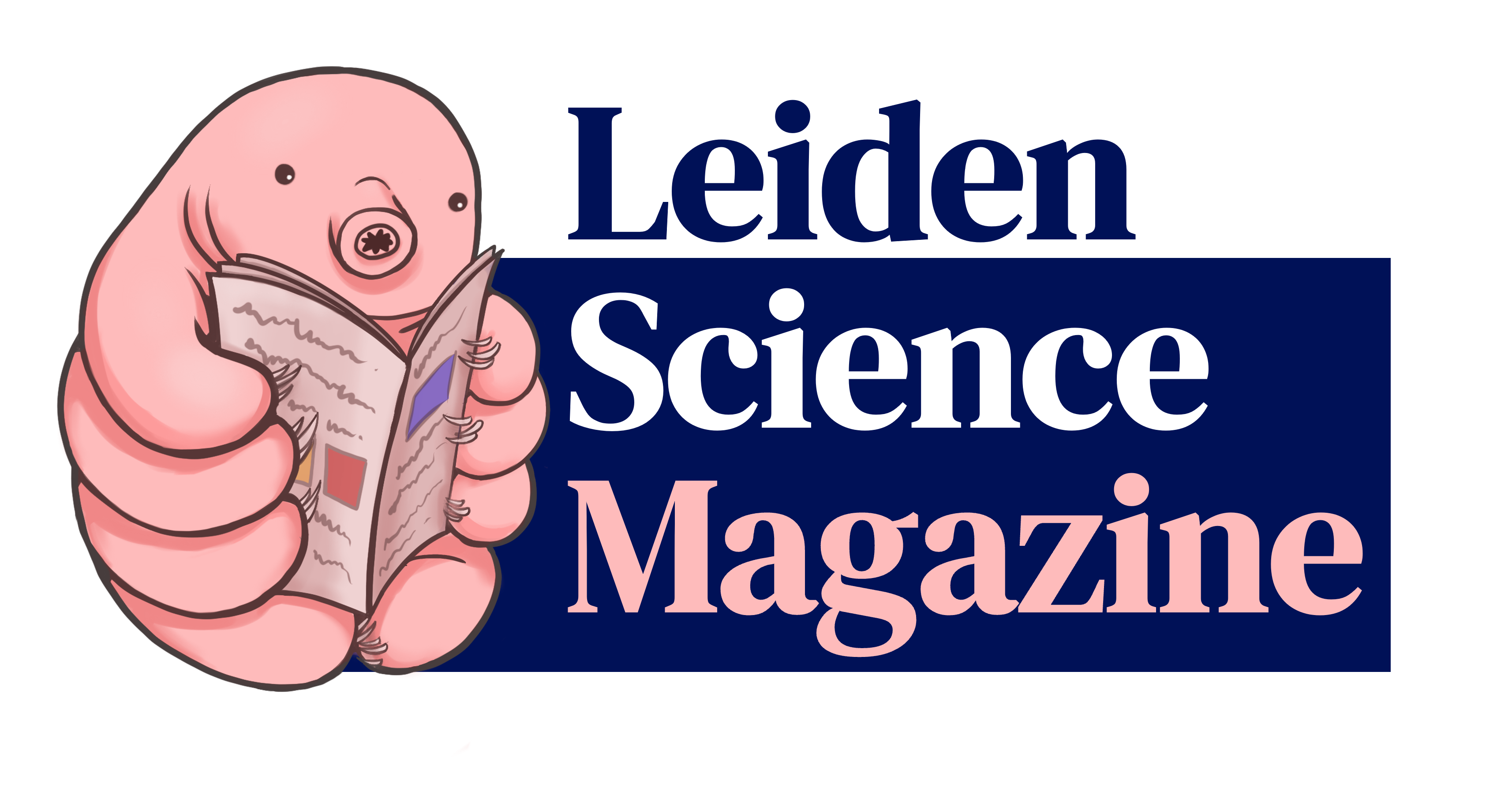Queer Animals and Where to Find Them
Did you know that some squids are functionally bisexual? Or that same-sex bird couples make great adoptive parents? The animal kingdom has its very own queer community, which I learned about last month from Werner de Gier’s talk at the monthly Biology on Tap event.
It turns out that there are examples of behaviours and relationships in many animals which do not fit inside our binary understandings of sex and gender, or ‘queer’ for short. 'Queer’ is a term that has recently been reclaimed by the LGBTQ+ community, and can refer to any relationship or gender identity that falls outside of societal norms.
On land...
Humans are not the only land animals who can be queer. For example, some komodo dragons are intersex, having a mixture of male and female traits. This occurs in central bearded dragons (Pogona vitticeps) after a process called sex reversal1. Although genetically male, some individuals resemble females more closely in both anatomy and behaviour; they have a longer tail and are more bold and active. This, in a way, also makes them non-binary, having a “gender” expression that does not fall within the binary. Although komodo dragons probably do not grasp the concept of gender enough to reject it. However, these individuals also produce eggs, even producing a greater number annually than genetic females. The decision to change sex is not made consciously. Still, it is interesting to see that flexibility in this species can result in individuals who do not conform to our binary understanding of sex.

…in the sea…
In some fish, it is the males rather than the females who become ‘pregnant’. This includes members of the Syngnathidae family, including pipefish, seahorses and seadragons2. Fathers incubate developing embryos from mating to birth in a specialised internal structure called a brood pouch, similar to the uterus. It is not uncommon in fish for parental care to be provided by males, in contrast to the gender norms of human society.
Queer relations have also been seen in the Humboldt squid (Dosidicus gigas), which can be deemed as ‘functionally bisexual’3. Male cephalopods (the group of animals including octopuses, squids and cuttlefish) produce sperm in “sperm packets” (spermatangia), which are attached to females to store the sperm until they are needed for the fertilisation of eggs. These spermatangia have been found deposited on both female and other male squids. This means that males mate with both other males and females.
… and in the air
Same-sex relationships have been observed in over 1500 animal species, around 130 of which are birds4. This includes the Laysan albatross (Phoebastria immutabilis), where long-term couples form between 2 females5. On Oahu island in Hawaii, around a third of pairs studied were lesbian couples. Albatrosses are socially monogamous, so these love-birds mate for life. This species also displays bi-parental care, meaning that both members of a couple will help to rear their chicks. Usually, eggs raised by lesbian couples were related to one of the mothers, and was raised jointly by their non-biological mother too.
There are also examples of cooperative breeding, when animals raise offspring which are not genetically their own. Queer couples who are not able to reproduce biologically can instead “adopt” eggs to raise. There are well-known examples of gay penguin couples. The 2 male penguins Roy and Silo in New York City’s Central Park Zoo, or Sven and Magic from Sea Life Sydney aquarium, successfully reared and hatched eggs that had been disregarded by other penguin couples6.

Same-sex adoptive couples have also been used to aid conservation efforts, including here in the Netherlands7. In Artis Amsterdam Royal Zoo, an abandoned vulture egg was adopted and raised by a same-sex couple in 2017. Two male vultures had been in a long-term relationship, always building a nest, bonding and mating together. As part of a conservation programme, their chick was released in Sardinia in 2018, where only 30 pairs of vultures were left five years before.
So, now you know that there is a thriving queer community within the animal kingdom, showing how wonderfully diverse nature is. Of course, none of these examples should be translated directly to humans – it simply is not true that bisexuals will mate with anyone, or that gay adoptive parents’ only role is to conserve the species. Instead, these fabulous examples provide an opportunity to appreciate and celebrate the diversity that exists across the whole animal kingdom.
Sources
- Li, H., Holleley, C. E., Elphick, M., Georges, A., & Shine, R.
(2016). The behavioural consequences of sex reversal in dragons. Proceedings of the Royal Society B Biological Sciences, 283(1832), 20160217. https://doi.org/10.1098/rspb.2... - Whittington, C. M., & Friesen, C. R. (2020). The evolution and physiology of male pregnancy in syngnathid fishes. Biological Reviews/Biological Reviews of the Cambridge Philosophical Society, 95(5), 1252–1272. https://doi.org/10.1111/brv.12...
- Hoving, H. T., Fernández-Álvarez, F. Á., Portner, E. J., & Gilly, W.
F. (2019). Same-sex sexual behaviour in an oceanic ommastrephid squid,
Dosidicus gigas (Humboldt squid). Marine Biology, 166(3). https://doi.org/10.1007/s00227... - Are there queer animals? Clownfish that change sex, and other species that demonstrate queer behavior. (2023, June 28). WWF. Retrieved November 6, 2024, from https://www.worldwildlife.org/...
- Turnbull, T. (2024, August 22). Sphen the penguin, one half of gay “power couple”, dies age 11. https://www.bbc.com/news/artic...
- Young, L. C., Zaun, B. J., & VanderWerf, E. A. (2008). Successful same-sex pairing in Laysan albatross. Biology Letters, 4(4), 323–325. https://doi.org/10.1098/rsbl.2...
- BBC News. (2018, April 16). Gay vultures’ chick from Amsterdam Royal Zoo released. https://www.bbc.com/news/world...



0 Comments
Add a comment